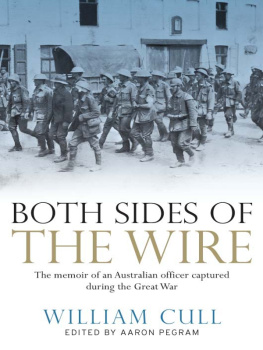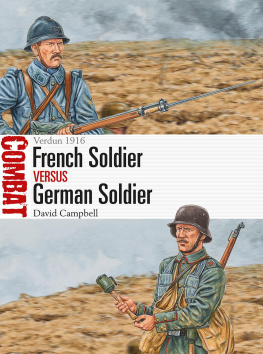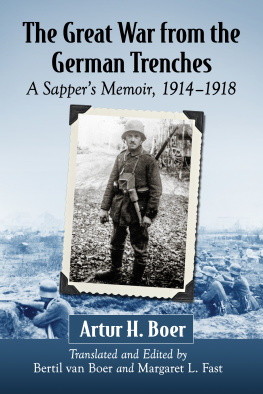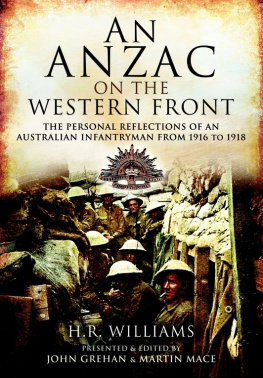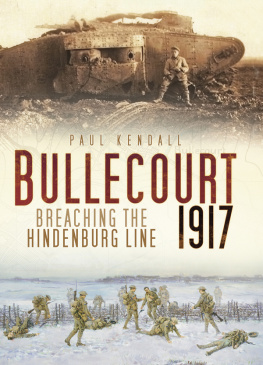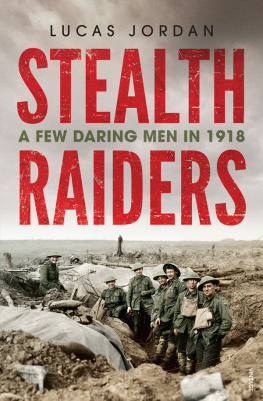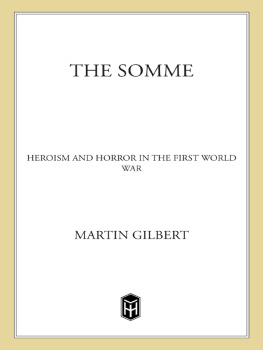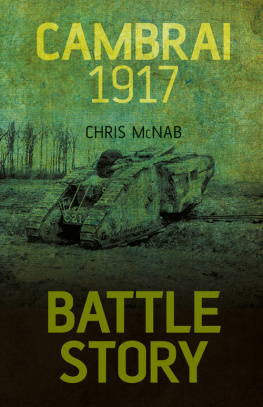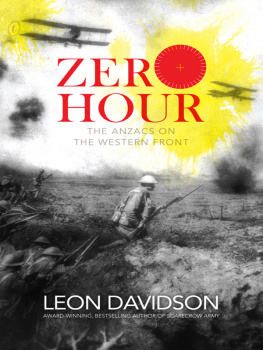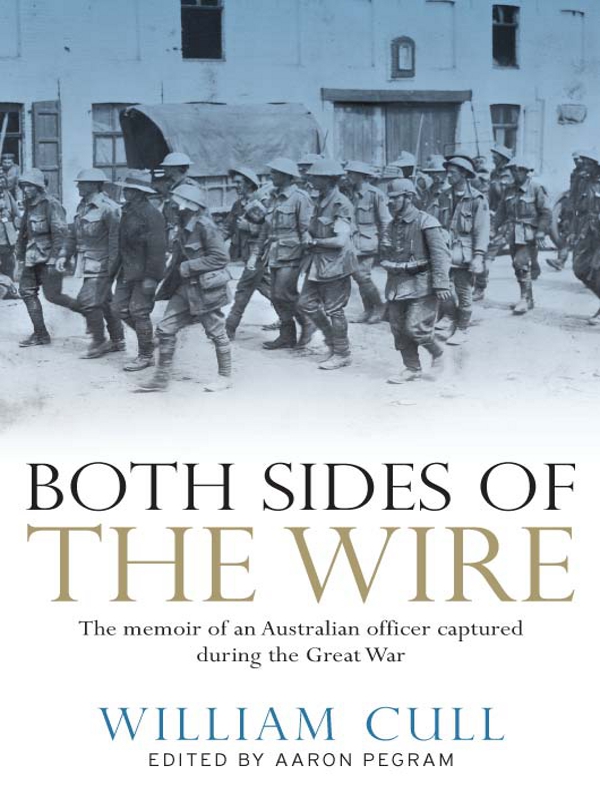
About the author
William Cull was an apprentice coach builder from Sanford, Victoria, who enlisted in the AIF in May 1915. He saw active service as an infantry officer on Gallipoli and the Western Front where he was severely wounded and taken prisoner during the 6th Brigades attack on Malt Trench near Warlencourt in February 1917. He spent eleven months in captivity in Germany before being transferred to Switzerland in January 1918. He died in Melbourne in 1939.
About the editor
Aaron Pegram is a historian at the Australian War Memorial and the Managing Editor of the Memorials magazine Wartime. A Charles Sturt University history graduate, he is currently writing a PhD thesis on the 3,861 Australian troops taken prisoner by the German Army on the Western Front.
BOTH SIDES OF
THE WIRE
BOTH SIDES OF
THE WIRE
The memoir of an Australian officer captured
during the Great War
WILLIAM CULL
EDITED BY AARON PEGRAM

First published in 2011
Originally published in 1919 as At All Costs
Copyright in this edition Allen & Unwin 2011
Introduction, Epilogue and Notes copyright Aaron Pegram 2011
All rights reserved. No part of this book may be reproduced or transmitted in any form or by any means, electronic or mechanical, including photocopying, recording or by any information storage and retrieval system, without prior permission in writing from the publisher. The Australian Copyright Act 1968 (the Act) allows a maximum of one chapter or 10 per cent of this book, whichever is the greater, to be photocopied by any educational institution for its educational purposes provided that the educational institution (or body that administers it) has given a remuneration notice to Copyright Agency Limited (CAL) under the Act.
Allen & Unwin
Sydney, Melbourne, Auckland, London
83 Alexander Street
Crows Nest NSW 2065
Australia
Phone: (61 2) 8425 0100
Fax: (61 2) 9906 2218
Email: info@allenandunwin.com
Web: www.allenandunwin.com
Cataloguing-in-Publication details are available
from the National Library of Australia
www.trove.nla.gov.au
ISBN 978 1 74237 616 5
Maps by Keith Mitchell
Typeset in 12.5/16.5 pt Perpetua by Post Pre-press Group, Australia
Printed and bound in Australia by Griffin Press
Page viii: Captain William Ambrose Cull, 22nd Battalion, in London
after thirteen months as a prisoner of war in German captivity.
Reproduced from At All Costs, 1919.
10 9 8 7 6 5 4 3 2 1

Contents
by Aaron Pegram

C aptain William Ambrose Cull, 22nd Battalion, Australian Imperial Force (AIF), was taken prisoner on the Western Front early on the morning of 26 February 1917. A veteran of the Gallipoli campaign and the fighting at Pozires on the Somme, Cull was seriously wounded in the hip by fragments of a German hand grenade as he led his company during a brigade attack on Malt Trencha formidable German stronghold just outside of the French village of Le Barque, which was well protected by thick belts of barbed wire, machine guns, and a garrison of well-trained and experienced German troops.
It was vital for attacks like these to be made with the assistance of large amounts of artillery that would cut paths through the wire and keep the Germans in their dugouts instead of at their machine guns, but this attack had no such support. Elsewhere, the Germans had withdrawn from their positionsso tenaciously held throughout the Battle of the Somme and the depressing winter that followedso that they could stand and fight the Allied armies along the Hindenburg Line many miles to the east. British and Dominion troops, including the Australians, followed in their wake, some re-establishing contact with determined German machine-gunners standing to fight a rearguard action. But Malt Trench was believed by Australian commanders to be lightly held and could easily be taken by the advancing infantry. Because the rest of the Allied front was following up on the German withdrawal, the commanders were eager that the attack be made and the objective secured. Cull headed out into No Mans Land to patrol the German wire the night before the attack, but found the German bastion at Malt Trench to be held by a powerful and determined enemy that was willing to stand their ground. He protested to his commanders, telling them how futile such an attack would be, but in reply was told curtly that not a shell would be fired and that the attack must be launched at all costs.
His objections ignored, Cull led his men within sixty yards of the uncut enemy wire before they were met by a wall of German rifle and machine-gun fire. Images of soldiers being hung up on barbed wire and slaughtered by machine guns is probably one of the most pervasive and exaggerated stereotypes of trench fighting during the First World War, but without the firepower to beat down the German wires it was the reality that faced Cull and his men that night in their attack on Malt Trench. Illuminated by German flares, Cull tells us that in the face of the murderous machine-gun fire, his doomed but dauntless men tore at the German wire with bare and bleeding hands in the effort to press on with the attack.
Cull negotiated the first belt of barbed wire and was making his way through a second when a German hand grenade landed at his feet and exploded, tearing away part of his hip and blowing him out in the open. He was dragged by his men to the safety of a nearby shell hole, but they were unable to bring him back to the Australian positions when they later withdrew. Owing to the loss of blood, Cull drifted in and out of consciousness for hours, but was mortified to wake to the sound of German troops moving about the uncut wire, searching for survivors. For Cull, the sudden realisation that he was going to be taken prisoner was purely mortifying: Now that there was no longer any hope of escape, I wished they would come, though what the Battalion would think of me if they knew that I was taken prisoner worried me.The thought was so bitter that for a moment I cared little whether I lived or died. Culls worst fears materialised in the form of a German soldier who discovered the wounded and bleeding Australian at the bottom of his shell hole, and brought him into the trenches that Cull and his men had so desperately tried to take.
William Cull thus became one of 4057 Australians taken prisoner during the First World War.1 I first came across his book, originally titled At All Costs, at the beginning of my PhD research on the Australians captured on the Western Front. Charles Bean, the Australian official historian, used Culls description of the attack on Malt Trench in Volume IV of the Official History of Australia in the war of 19141918, and Bill Gammage used Culls letters in the State Library of NSW for his PhD thesis which ultimately became The Broken Years the landmark study of Australians during the First World War. Hundreds of books document the horror that 21,400 Australians suffered in Japanese captivity during the Second WorldWar, but At All Costs
Next page
